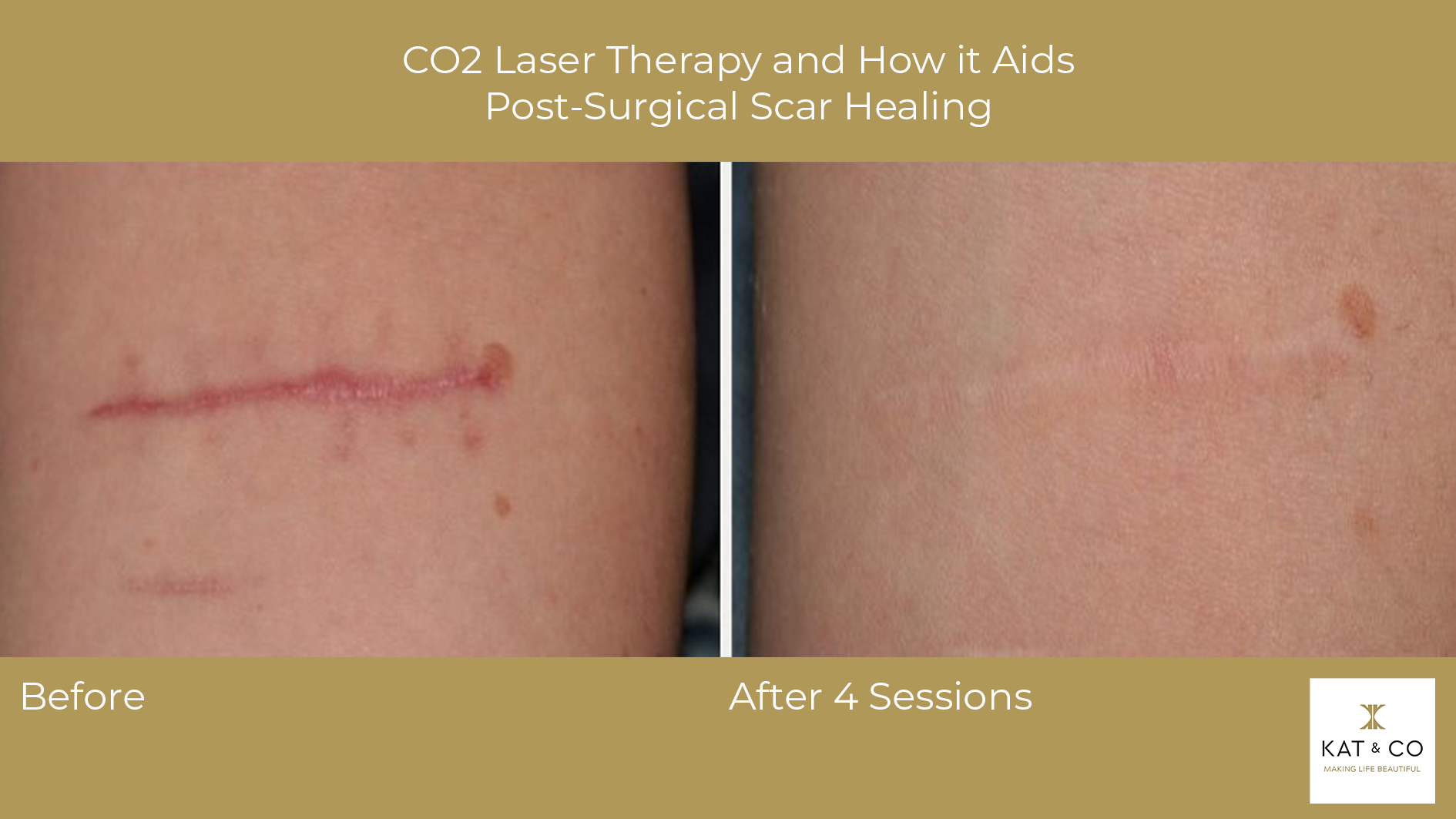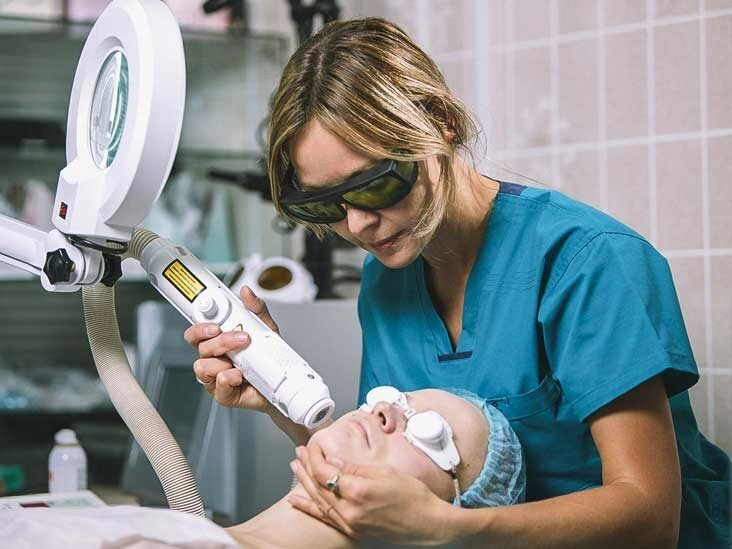About
- Laser therapy for scars diminishes how noticeable scars are. It employs concentrated light to either vaporize the top layer of skin or encourage new skin cell growth to replace damaged tissue.
- Laser procedures can lessen the visibility of warts, fine lines, age spots, scars, and keloids. They do not completely eradicate a scar.
Safety
- This treatment typically requires a topical anesthetic to numb the area. In some cases, sedation is used.
- Laser therapy for scars is performed as an outpatient service and should be carried out by a board-certified dermatologist.
- Common, mild side effects include discomfort, swelling, redness, and temporary oozing. These symptoms usually resolve within a few days.
Convenience
- There’s minimal downtime after this procedure. Expect healing in about 3 to 10 days.
Cost
- The price of laser scar treatment varies widely, ranging from $200 to $3,400 based on scar size and treatment intensity.
Efficacy
- While scars can’t be fully removed, research indicates laser therapy can significantly reduce a scar’s prominence and thickness.
Laser treatment for scars
Laser therapy directs focused light beams at damaged skin areas. It is used to remove growths, improve vision in some cases, address hair loss, and relieve certain types of pain. It’s also effective in improving the look of scars.

Performed on an outpatient basis, the procedure involves a clinician moving a laser device over the skin to eliminate damaged cells and lessen the appearance of scars. Laser therapy can treat:
- traumatic injury scars
- burn scars
- acne-related scarring
- dark spots, age spots, and other hyperpigmentation
Because lasers rely on heat and light, this option may not be suitable if you have photosensitivity. Certain drugs increase sensitivity to light, so discuss your medications with your physician to determine suitability.
Your clinician may advise against laser therapy if you are taking blood thinners because of bleeding risk.
They may also recommend avoiding laser treatment if you have:
- active acne
- open skin lesions
- darker skin tones
Before and after pictures of laser treatment for scars
How much do laser treatments cost?
Because laser scar treatments are cosmetic and elective, they are often not covered by insurance.
Price is influenced by:
- the scar’s size
- how many scars are being treated
- the number of treatment sessions required
Note that multiple sessions may be necessary to achieve desired outcomes, and each visit carries its own fee.
Because out-of-pocket expenses vary, it’s wise to consult with several providers to compare costs. Some clinics may charge a consultation fee in addition to the treatment price.
On average, a single laser session to enhance the look of a scar costs between $200 and $3,400, according to the University of Michigan’s Department of Dermatology.
There is no prolonged recovery period with this treatment, so extended time away from work is usually unnecessary. You may be able to return to work the next day or within a few days.
How do laser treatments for scars work?
Laser scar treatments don’t erase a scar entirely; their aim is to make a scar less conspicuous.
After skin is injured, the body starts repairing the area. A scab forms to protect the wound and eventually falls off. Depending on how deep the wound was, the skin beneath the scab may match the surrounding skin or leave a lasting scar.
Some scars fade on their own over time. For persistent scars, lasers can remove the outer damaged skin layer to smooth the surface and enhance tone.
Lasers also target blood vessels within scar tissue to reduce redness and can penetrate beneath the surface to stimulate new skin cell and collagen production.
Procedures for laser treatments for scars
During your consultation, the clinician will choose the most suitable technique for improving a scar. Options may include:
Ablative or laser resurfacing
This approach improves scars, warts, and wrinkles by removing the top skin layer and eliminating damaged surface cells. A carbon dioxide (CO2) laser may be used for deeper scars, while an erbium laser is suitable for more superficial scars.
Fractionated laser resurfacing
This technique delivers laser energy into deeper layers of the skin to remove pigmented cells, while also stimulating collagen and encouraging skin cell renewal to reduce scar visibility.
Non-ablative laser resurfacing
Infrared heat lasers penetrate the dermis without removing the surface layer, promoting collagen formation and cell turnover to replace damaged skin.
Laser scar procedures are outpatient treatments and vary in duration. Mild discomfort is common; a topical anesthetic is applied to numb the area. For larger treatment areas, you can request sedation.
Are there any risks or side effects?
Because laser treatment uses heat and light on damaged skin, possible side effects include:
- scarring
- swelling
- itchiness
- redness
- bleeding
- pain
Mild side effects typically improve within a few days. Contact your doctor if you notice signs of infection, such as worsening redness or severe pain. Other infection indicators include the formation of an abscess or pus near the treated area.
What to expect after laser treatment for scars
Healing times differ, but skin recovery often takes 3 to 10 days. Your clinician will give you aftercare directions following the procedure, which may include:
- Avoid direct sun exposure for four to six weeks after treatment.
- Use a cold compress or damp cloth to reduce swelling.
- Take over-the-counter pain relievers as needed.
- Gently cleanse and moisturize the area daily.
- If the face was treated, you may need to skip makeup for a few days.
Results from laser skin treatments for scars are durable, though not always permanent. Additional sessions may be required over time.
Improvements aren’t always immediate; it can take weeks or months to notice visible changes.
Laser treatment for scars preparation
After deciding on laser treatment for scars, your clinician will outline steps to prepare. Common pre-procedure instructions include:
- Quit smoking at least two weeks before the session.
- Avoid aspirin, supplements, or medications that impair healing.
- Stop using skincare products with retinol or glycolic acid two to four weeks before treatment.
- Use sunscreen and limit sun exposure prior to the procedure.
- If you’re having a facial laser and are prone to cold sores, your clinician may prescribe an antiviral to prevent an outbreak after treatment.
How to find a provider
If you want to reduce scar visibility, laser treatment may offer favorable outcomes.
Be sure to select a board-certified dermatologist to perform this procedure and schedule a consultation to discuss pricing and details.
Helpful resources to locate a qualified provider include:
Healthgrades is owned by RVO Health. By clicking this link, we may earn a commission. Learn more.


















Leave a Reply
You must be logged in to post a comment.